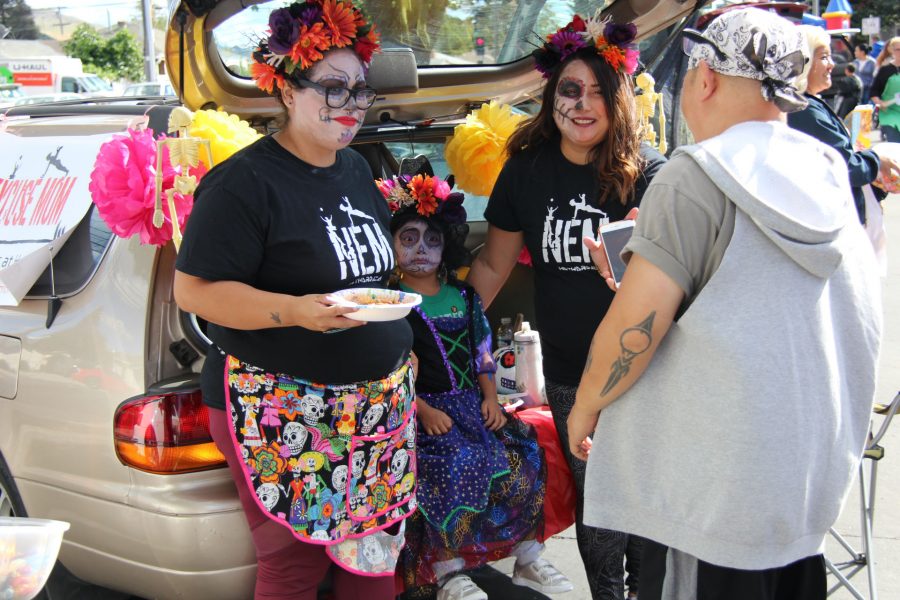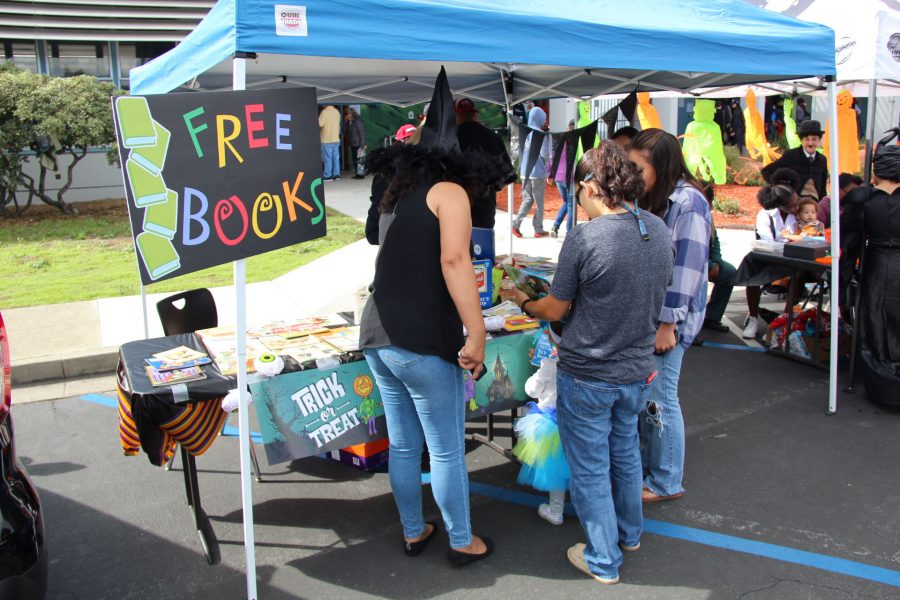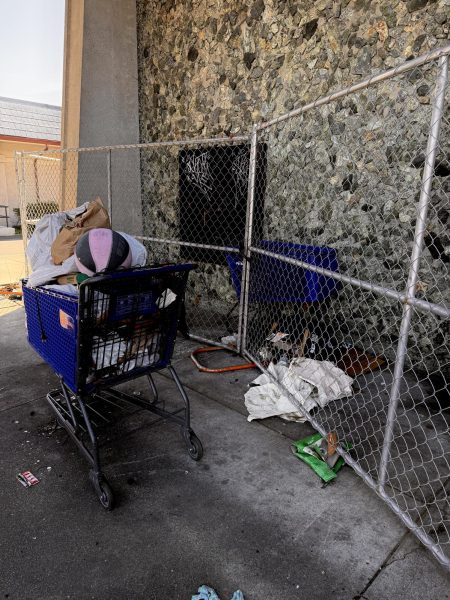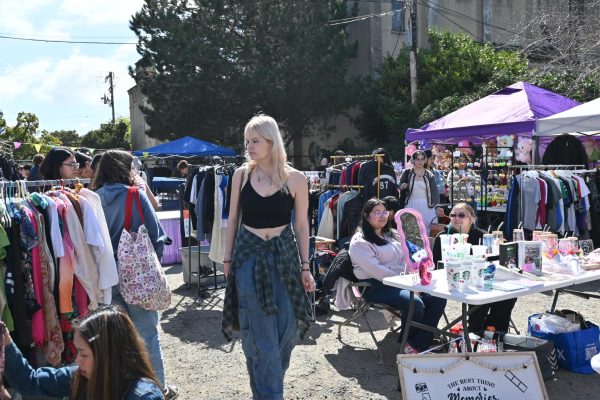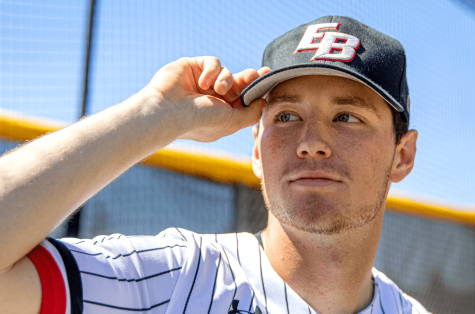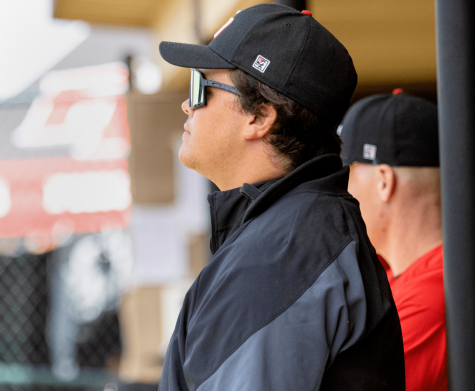Hayward trunk or treat event encourages autism acceptance
Cars adorned with spider webs and Halloween decorations opened their trunks to offer candy, treats and games to costumed attendees. Local organizations like the Hayward Promise, Brews and Brats, Snappy’s Cafe, Made in Hayward and Autism Army volunteered, sponsored and participated in the event, which drew a crowd of around 500, according to Ria Lancaster, a parent of a child with autism and organizer of the event.
Lancaster said she wanted to provide a place where kids diagnosed with Autism Spectrum Disorder could feel comfortable and accepted and where parents could network and support each other. Her inspiration was her seven-year-old son, Balian, who was diagnosed with autism in 2013.
Lancaster said she and her husband first noticed something different about Balian when he was about two and a half years old. At 19-20 months, he had been able to list all the letters of the alphabet and numbers up to 20 and his speech was considered advanced. A few months later, however, his speech became delayed and it became increasingly difficult for him to make eye contact.
According to the Center for Disease Control, one in 68 children have been diagnosed with autism. While some cases are identified as early as age two, most are not until after age four and children can exhibit a wide range of symptoms that vary in severity. About 44 percent of children who are diagnosed have tested with average to above average intellectual abilities.
When people hear the word “autistic,” many picture a child with severe social problems that doesn’t like to be touched and can’t connect well with others, but Lancaster said this isn’t the case with Balian. “Balian is really affectionate,” she explained. “He’s sensory seeking” and is drawn to clothes that have different textures. “When people see him he may not come across as special needs.” However he still faces a unique set of challenges that classify him as mild to moderate on the autism spectrum.
Balian still can’t speak easily and can only say up to four words, such as “I want popsicle please,” explained Lancaster. He attends a special day class at East Avenue Elementary in Hayward that caters to students with autism. The day class employs one teacher and three aids and accepts no more than nine kids at a time, in order to provide the students with one-on-one attention.
Balian also receives in-home Applied Behavioral Analysis therapy three hours a day, four days a week after school. This treatment helps children learn “socially significant behaviors” such as reading, academic and social skills and applied living behaviors, according to the Center for Autism and Related Disorders, Inc.
Lancaster said that each time they meet, they set up a new goal for Balian and review his progress every three months. Through ABA therapy, Balian was potty-trained and just met his most recent goal: learning how to greet people. “When you see one autistic kid, it’s completely different compared to another,” said Lancaster. “It’s like night and day.”
Lancaster said resources for parents that have autistic children are lacking in the Bay Area and she primarily connects with other parents through event pages on Facebook.
In 2013, the same year that Balian was diagnosed, Lancaster established Twinkies Krafts, a nonprofit that provides local events in the Hayward community for special needs kids and their parents. The Trunk or Treat event was the first ever hosted by the organization.
Lancaster also used to create and sell handmade autism-awareness jewelry and crafts through her Twinkies Krafts profile on Etsy and donated 75 percent of the proceeds to Lucille Packard Children’s Hospital, which she said helped Balian with speech lessons and occupational therapy when he was first diagnosed.
“I want to have these kids be more involved in the community,” said Lancaster. “Yeah, we exist, and yeah, we’re different. Spreading awareness is great, but what these kids really need is acceptance.”
Other Trunk or Treat tablers took to creative means to cast a spotlight on autism last weekend. Bruce Bookman, a software quality assurance engineer from Los Gatos doubling as a spray paint artist, sold abstract spray paint creations that range in subject matter from planets to dolphins leaping against a sunset.
Inspired by street artists at a festival, Bookman learned the techniques on YouTube and has been painting for the past three months. Each creation he said, takes no more than an hour. According to his website, Art2BenefitAutism.com, Bookman donates five percent of the proceeds directly to the Autism Science Foundation, a nonprofit that provides funding to scientists researching causes and treatments for autism.
Matthew Pizzi, a fifth grader at Prince of Peace Lutheran School in Fremont, better known as “Matty the Magician” to his classmates, performed magic tricks at the event. His favorite, according to his mother Pam Pizzi, is the trick where he lights an ordinary piece of paper on fire and turns it into money.
Pizzi has performed at his school every year since the first grade and has even opened for the Bay Area’s own renowned, award-winning magician Dan Chan the Magic Man.
Event-goers also had the opportunity to take pictures on a Honda CBR1000RR motorcycle supplied by Marty Seagraves, creator of the Autism Army group, which aims to raise awareness about autism by bringing motorcycles to special needs camps, as well as car and bike shows. The group was started in 2007 and was inspired by Seagraves’ son, who was diagnosed with Asperger’s when he was two years old.
“My son has autism,” he said. “I just wanted to get off the couch and do something about it.” When Seagraves’ son was diagnosed, he was a late talker and tongue-tied and doctors predicted that he would never be social, said Seagraves. Today, he is 13 years old, high-functioning and is mainstreamed in a “regular” junior high school.
“We just take it day by day, you know?” said Seagraves. “We tell people, they’re all different, all the kids are different just like me and you. We’re different people and so are they. It’s more acceptance than awareness now, because awareness has been so prominent that everyone actually needs to move toward acceptance through their communities. Everyone I meet knows someone on the spectrum.”


